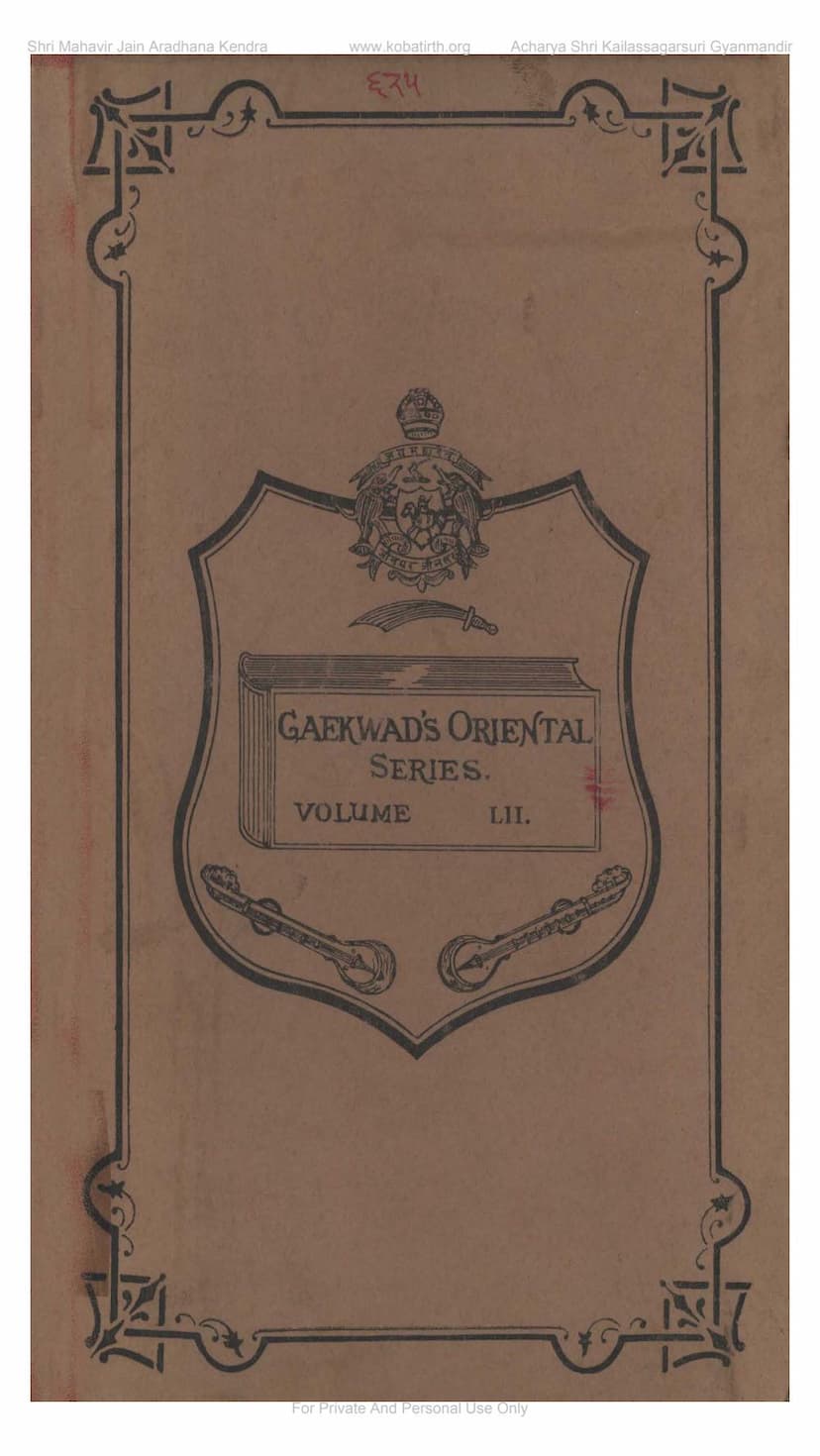Dandvivek
Added to library: September 1, 2025

Summary
The provided text is the introduction and partial content of "Dandaviveka," a medieval Sanskrit treatise on penal law authored by Vardhamāna Upādhyāya and critically edited by Mahāmahopādhyāya Kamala Krishna Smṛtitīrtha. Published by the Oriental Institute, Baroda, in 1931 as part of the Gaekwad's Oriental Series, the work delves into various aspects of crime and punishment prevalent in ancient and medieval India.
The introduction, written by B. Bhattacharyya, contrasts modern theories of punishment (preventive, deterrent, reformative, retributive) with primitive and ancient ones, emphasizing the predominantly retributive approach in early Indian penal codes. It highlights the evolution of legal principles like individual responsibility, the distinction between intent and unintentional acts, and the concept of an impartial judiciary.
The "Dandaviveka" itself is structured into seven chapters: Introductory, Murder, Theft, Rape, Defamation, Assault, and Miscellaneous.
Key aspects covered in the introduction and text include:
- Types of Punishments: The work quotes Brhaspati, categorizing punishments into fourfold: admonition (vāk), reproof (dhihk), fine (dhana), and corporal punishment (vadha). Vardhamāna elaborates on these, detailing specific forms of admonition and reproof, and classifying fines into fixed and fluctuating types.
- Corporal Punishments: These are further divided into infliction of pain (beating, restraint, chaining, harassing), mutilation of limbs (fourteen types identified based on body parts), and death proper (simple and mixed forms).
- Monetary Punishments: The text outlines gradations of monetary punishments, such as Yāma-lābha (24-91 panas), Madhyama-sāhasa (200-500 panas), and Uttama-sāhasa (600-1000 panas), and provides detailed explanations of various units of currency and weight (pana, māṣa, dīnāra, niṣka, karṣa, pala, etc.).
- Specific Offenses and Punishments:
- Murder: This chapter includes the killing of lower animals and details the processes for tracing murderers, along with punishments based on the caste of the victim and the perpetrator.
- Theft: Defined as unlawful taking, it's differentiated from robbery. Theft is classified into robbers, cheats, and thieves, with punishments including reimbursement, proclamation, and pecuniary or corporal penalties. Immunity is granted for taking small items without permission under certain conditions.
- Rape and Similar Offenses: This broad category covers rape, adultery, incest, and unnatural offenses, with detailed classifications based on the marital status and character of the victim. Punishments vary for defiling virgins, with specific penalties for incestuous intercourse and offenses with animals.
- Assault: This chapter addresses assault and taking the law into one's own hands, outlining stages of assault and specifying punishments for causing bodily injury, mental pain, and attempts. It also lists categories of assailants.
- Defamation (Rudeness of Speech): Speech is categorized into cruel, obscene, and severe. Defenses like truth and apology are mentioned.
- Miscellaneous Topics: This chapter covers "Rash Act" (Sāhasa), its five types, and includes miscellaneous topics like the "Cause of Action" (Vyavahāravishaya) listing eighteen causes for legal proceedings, and "Procedure" (Vyavahāravishaya), detailing rules of court procedure, punishments for false evidence, and the concept of res judicata.
- General Exceptions to Criminal Liability: The "Dandaviveka" includes an extensive chapter on general exceptions, similar to modern penal codes. It lists eleven considerations before inflicting punishment, including caste, subject of offense, amount of punishment, age, pecuniary condition, locale, time, and specific offense. Caste plays a significant role in determining the severity of punishment, with Brahmins often receiving more lenient treatment or different forms of punishment.
- Comparison with Indian Penal Code: The introduction notes that the "Dandaviveka" covers fewer offenses and its classification is less scientific than the Indian Penal Code. Several modern offenses are not addressed in the "Dandaviveka."
- The Author: Vardhamāna Upādhyāya was from Mithila, the son of the poet Bhaveśa, and a disciple of Śankara and Vācaspati Miśra. He lived in the 16th century, contemporary with his patron, King Bhairava of Ṭīrabhukti, and the famous scholar Vacaspati Mishra. He authored nine works on Smṛti, with "Dandaviveka" and "Dvaitaviveka" focusing on positive law.
- Sources and Methodology: The critical edition is based on five manuscripts and draws upon various Smṛtis, commentaries, Purāṇas, and Nibandhas, with a significant reliance on the Vivādaratnākara.
In essence, "Dandaviveka" offers a detailed look into the principles and practices of criminal justice in ancient and medieval India, reflecting a complex legal system that considered factors like caste, social status, and the nature of the crime in determining punishment.